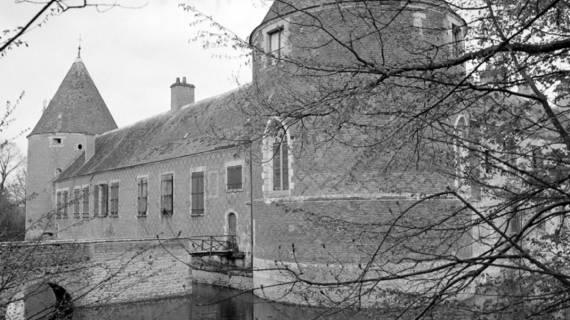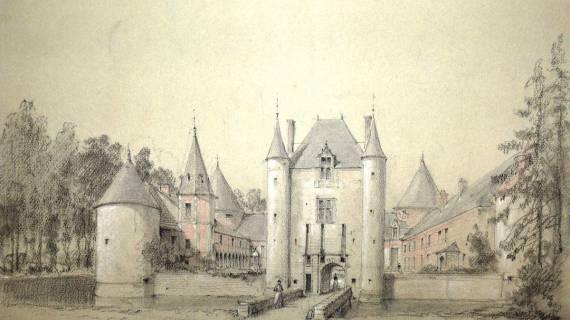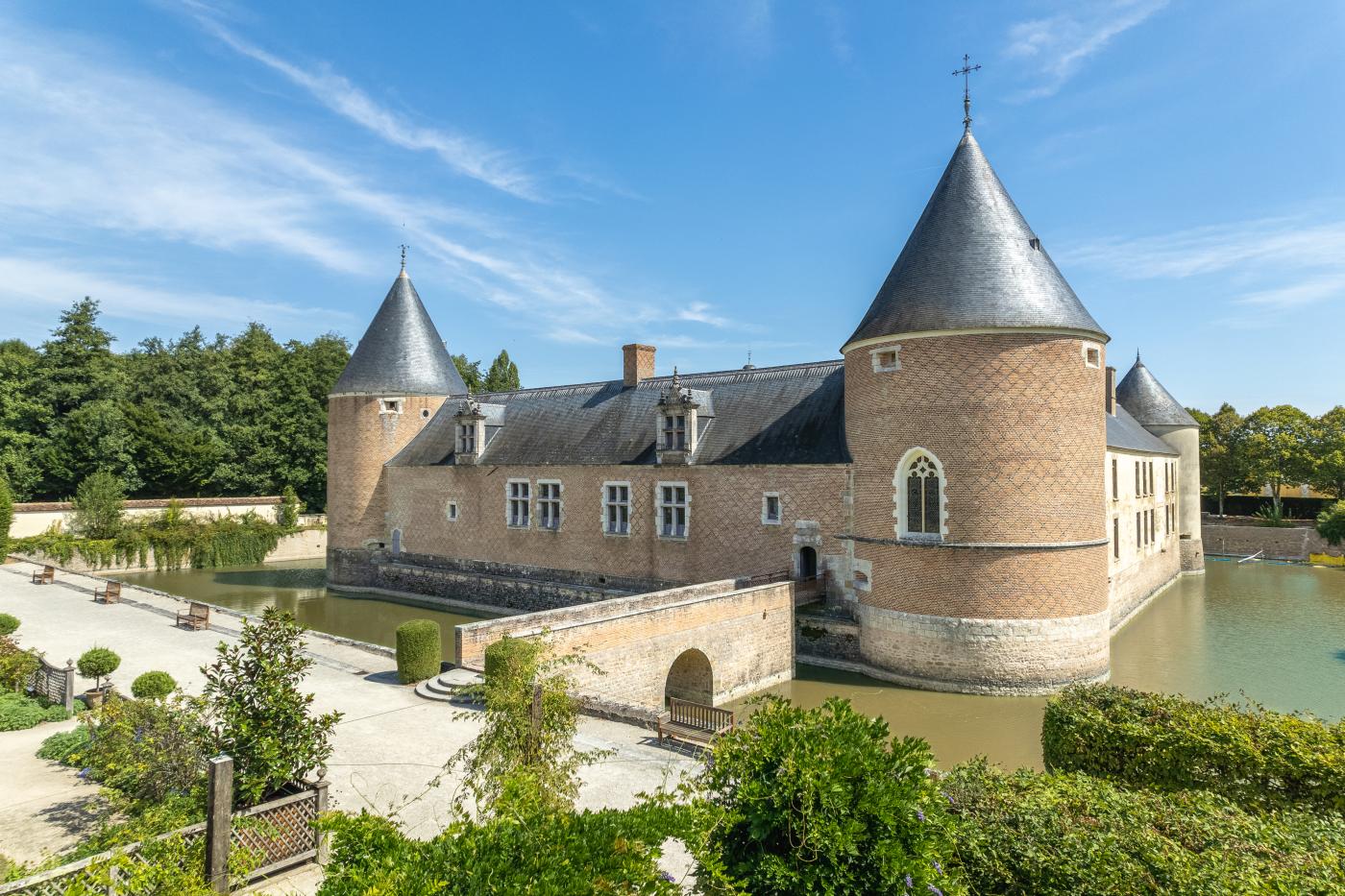A Renaissance Château
The history of the château through five key periods
In 1440, at the end of the Middle Ages, Bertrand Dulac, Lord of Bazoches-les-Gallerandes, acquired the Lordship of Chamerolles, the area of which totalled several thousand hectares. His son Jean married Isabeau de Salezard, daughter of a captain to Charles VII and Louis XI. This union produced Lancelot, named in honour of the heroes of popular Arthurian novels.
From 1494, Lancelot du Lac fought alongside the Duke of Orléans, the future Louis XII, in the Italian campaigns. When Louis XII acceded to the French throne in 1498, Lancelot was appointed Governor of Auxerre and cup-bearer to the King. Later, in 1504, he was appointed Governor of Orléans and King's Chamberlain. In 1515, François I succeeded Louis XII and Lancelot du Lac, who remained chamberlain, became bailiff of Orléans after Guillaume de Montmorency. In 1519 he was married a second time, to Louise de Coligny, sister of Gaspard de Châtillon-Coligny.
It was at this time that the castle was completely rebuilt. The architectural style, with its red and black brick décor, covered Italian gallery, mullioned windows and octagonal tower, is partly inspired by the Louis XII wing of the Château de Blois, built around 1500 and well known to Lancelot I du Lac.
François I stayed with his retinue in Chamerolles on three separate occasions, in 1530, 1532 and 1536, en route from Chambord to Fontainebleau.
Lancelot II du Lac (?-1622), grandson of Lancelot I, converted to Protestantism and transformed the chapel into a temple. He defended the reformed religion with his cousin Gaspard de Coligny and alongside Henri de Navarre in Flanders in 1585, while Henri III entrusted custody of the Château de Chamerolles to the "Sieur de Dampierre, captain of fifty men-at-arms ". Even today, the chapel retains traces of this period, where some of the oldest currently known Protestant paintings in France are visible on the vault. Lancelot II also landscaped the Renaissance gardens located behind the building.
During the 17th Century
In 1672, the Dulac family sold the Chamerolles estate, after 235 years of occupation, to Jacques-François de Johanne de la Carre, Marquis of Saumery. He was the brother-in-law of Colbert, Governor of the Château Royal of Chambord and of the County of Blois, State Councillor, Marshal of the King's Armies and Grand Master of Waters and Forests for Ile-de-France. In 1650 he married Catherine Charron, sister-in-law of Colbert, who bore him three children: Jacques-François, Marie and Jean-Baptiste.
It was under his order that the south wing of the castle was raised to accommodate his private apartments. A corridor provides access to the bedrooms. The Saumeys undoubtedly lived in these apartments when they resided at the château. The fireplaces, now restored, are of stone painted in trompe-l'oeil in imitation of marble.
During the 18th Century
In 1764, Chamerolles was acquired by Claude-Guillaume Lambert, financial controller of Louis XVI and Adviser to the Parliament of Paris. He made some modifications to the château, most notably the creation of the oak rostrum with the arms of his family in the chapel, the half-moon courtyard at the front of the castle, and the large iron gate still visible today. He was also to create the so-called “English-style” park and its reflecting pool. Remaining loyal to the king, Claude-Guillaume Lambert was arrested during the Revolution, imprisoned in the Conciergerie in Paris, and tried and sentenced in 1794. The estate was then confiscated by the State and was not returned to his descendants until 1805.
Baron Edouard Lambert, grandson of Claude-Guillaume, was Mayor and Municipal Councillor of Chamerolles on several occasions between 1840 and 1886. On his death in 1886, his daughter Antoinette, who became Countess of Brossard through her union with her cousin Philippe, inherited the château.
During the 20th Century
The Lamberts’ château, well maintained during the 19th century, served as a place of convalescence for soldiers during the First World War. A hospital was set up within its walls to treat war wounds.
In 1924, the château was sold to Gaston Jessé-Curély, its last private owner. A graduate in political science, he had a taste for beautiful items, collecting drawings from the French School, Japanese prints and Oriental rugs. The castle did noble service as a showcase for his collections. He was the driving force behind the inclusion of the castle on the List of Historic Monuments in 1927.
Occupied during the Second World War by 200-250 Germans, the castle even served as a Kommandantur. An inscription to this effect is still visible on a wooden staircase. When the Liberation occurred, the castle was ransacked and stripped. The roofs were perforated and the windows broken, and some precious items and furniture disappeared. The rest of the furniture was thrown into the moat or burnt in the inner courtyard. On 13 August 1944, six young guerrillas were shot by the Wehrmacht near the castle. Two leaders of the Resistance, Captain Giry and Abbé Thomas, who had come to give instructions, were in turn arrested, tied to the pillars of the Italian gallery and transported to the Forest of Orléans to be shot there during the attack on the Maquis of Lorris.
After the Second World War, the château was returned to Gaston Jessé Curély. He died in 1958, followed by his wife in 1964. As they had no children, they bequeathed the château to their niece who, as she lacked financial resources, donated it to two associations who transformed the site into an accommodation and leisure centre for a number of years. When these two organisations went bankrupt, the City of Paris, which stood as guarantor, took over the Chamerolles estate in 1976. Because of a lack of maintenance funding, the site passed to the Département of Le Loiret in 1987. The Département then undertook five years of restoration work. The château reopened to the public on 2 May 1992, being inaugurated by the then mayor of Paris Jacques Chirac.
Now
In 2009, an old gâtinaisian agricultural hall, 35 m long and 12.50 m high, previously in Bellegarde then in Auvilliers-en-Gâtinais, was completely restored and installed on the Chamerolles site in order to host events, shows and temporary exhibitions. This ancient hall is a striking example of local architecture, with its roof consisting of 800 m² of tiles, half of them original. Enclosed by bay windows, its main room, measuring 400 m², is regularly hired out for weddings and private ceremonies.
The gardens are lovingly tended by our only gardener. His working days are dedicated to reviving the tradition of a Renaissance garden. Rose bushes, exotic plants, ornamental plants and vegetable gardens are all treasures that need to be preserved and protected.




